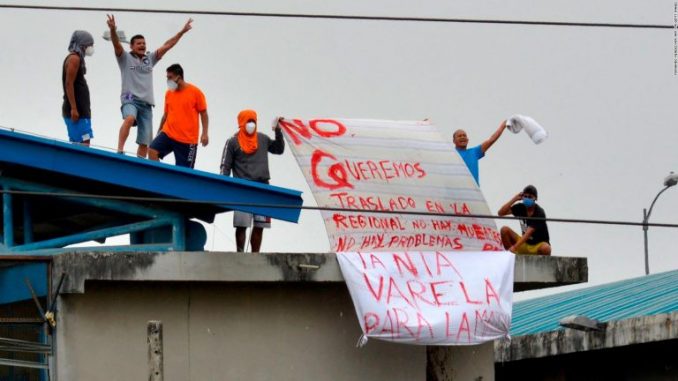
The Comprehensive Care Service for Persons Deprived of Liberty and Adolescent Offenders (SNAI) presented the Prison Security Plan, with which it will seek to combat the emergency situation that exists within the main prisons of Ecuador and that have produced, in recent years, serious conflicts between inmates.
This plan contemplates a pardon project for people who have already served 40% and 60% of their sentence in minor crimes, a prison census that is expected to be carried out this year, the creation of a prison school, the beginning of a process of selection of 1,400 aspiring agents to cover the current deficit that will be launched in April, the future purchase of 5,000 electronic surveillance devices for the interior of penitentiaries, the implementation of infrastructure projects to expand the capacity of the prison system and the repatriation of foreign prisoners who are currently kept mixed in the national pavilions.
These reforms were unified in the pacification plan aimed at combating violence and overcrowding in prisons. In this process, the Commission for Dialogue and Pacification of the Prison System was created with the participation of international experts.
In this way, the commission was in charge of visiting the prisons of the country, evaluating the current situation of the PPL and presenting a report so that the SNAI could build a strategy and action plan to be able to solve the current situation within the penitentiaries.
During the inspection and evaluation process of the current state inside the pavilions, it was determined that there are 34,714 people deprived of their liberty at the national level and 403 adolescent offenders, which in total add up to 35,117 PPL, for which the current overcrowding is of a 15.07% and that there are barely 1,600 prison guides to control the entire inmate population.
However, and despite the fact that there is now a plan to change the situation presented by the figures collected, the truth is that the necessary actions such as the classification of prisoners and the transfer of the leaders of the main criminal gangs cannot yet be implemented. .
Given this situation, the director of the SNAI, Pablo Ramírez, pointed out that the prison census should first be launched by the Civil Registry and the National Institute of Statistics and Censuses (INEC), but there would not yet be a specific date for for this process to run.
The prison census also influences the reclassification of prisons, which is expected to take into account five parameters: existing infrastructure, installed capacity in human and logistical resources, level of security and target population, rehabilitation centers of type A, B and C or maximum , minimum and medium security, respectively.
On the other hand, the implementation of the penitentiary school, to train the agents and personnel who work in prisons, must be coordinated by the Ecuadorian Foreign Ministry, since it will have the collaboration of the Pact of the European Union, the Institute National Penitentiary and Prison (Inpec) of Colombia and the Penitentiary Service of El Salvador. The presentation of this plan was made in the discussion with the media called “Peace managers: communication, justice and humanism.”

Be the first to comment